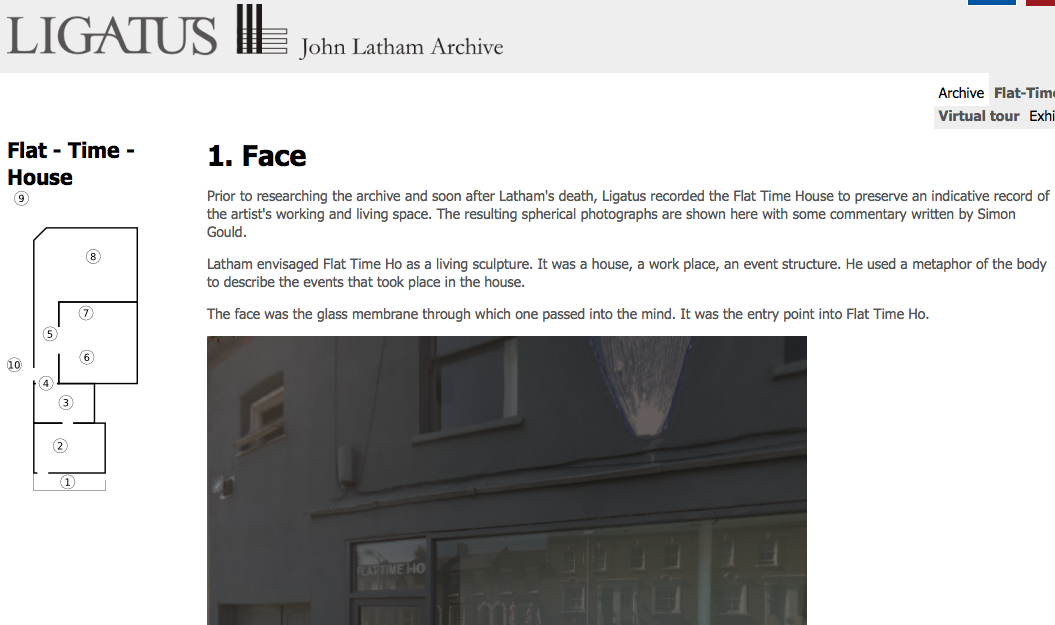The John Latham Foundation and Archive is known as Flat Time House, after the artist’s theory of flat time. The house is structured as a body – the archive being the mind, the garden the hand, the gallery space (the head)? It was a literal description of the etymological reading of Archive by Derrida at the start of Archive Fever- Arkhe – the house within which information is stored, and those within it, literal guardians of the archived life of another.
The house itself – the place where the artist lived and worked, had become a “living” archive, as such – in the following ways:
1. turning into a foundation and museum and thus transforming the contents into archival objects
2. activating the archive through exhibitions, happenings in and out of the space etc..
3. the digital archive now being created with a team at Camberwell who are organising information the way Latham had organised it
Latham had organised the Archive himself, in a very particular way that not even the curator and director could understand. He had taken great pains in separating the Latham archive with his work for APG (Artist Placement Group). In this sense, this is a genuine archive, in that all material came from one person, about one person (see SCAM). This recalls the notion of subjectivity within the archive on two levels – one the fact that archivists are often known to deal with information subjectively, and in this case, this is a quintessentially subjective archive (at first glance) and two, it recalls the editing of the archive as “future history” – Latham organised things before his death – just as people have been invited to archive their lives on Facebook.





 RSS Feed
RSS Feed